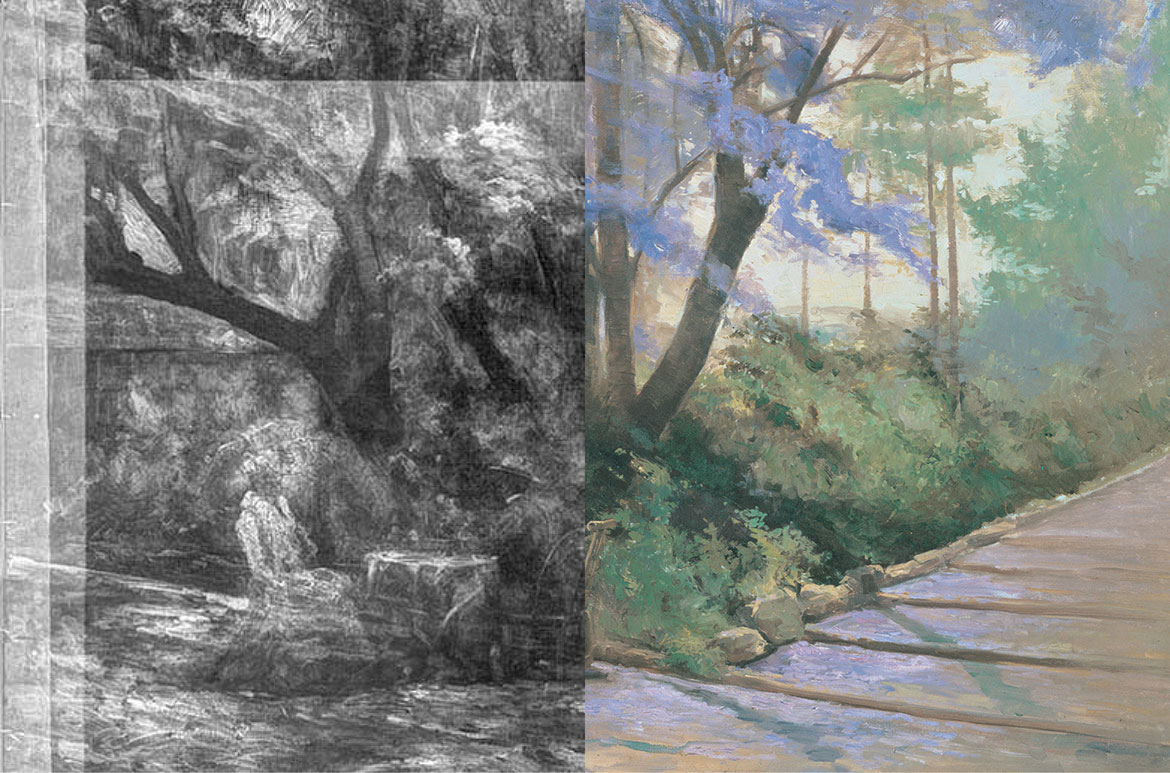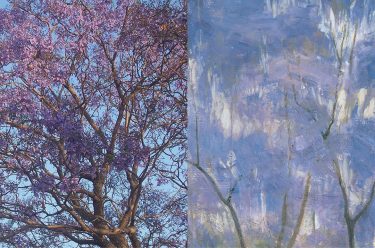It’s Jacaranda season in Brisbane, the time of year that splashes of fluorescent lavender coloured blooms dot the landscape and end with an eye-catching display of purple rain. Even though the flowering season is only a couple of months, the Gallery’s painting Under the jacaranda 1903 by R. (Richard) Godfrey Rivers (1858-1925) is always in full bloom. Read on as we continue our behind-the-surface series to uncover the secrets of Brisbane’s most popular Jacaranda with the help of microscopes, X-rays and UV light
CONSERVATION RELATED: What’s under the Jacaranda: DELVE INTO THE COLOUR PURPLE
CONSERVATION RELATED: What’s under the Jacaranda: KEEPING THE PAINTING UNDER GLASS
Conservators and photographers at QAGOMA have obtained X–ray licenses to be able to safely undertake X–ray imaging of paintings in the collection. In the conservation studio at the Gallery of Modern Art (GOMA) we have a lead lined room and an industrial X–ray machine certified to undertake X-rays.
Under the jacaranda was one of the first paintings to be X–rayed using digital technology (as opposed to film) using second hand plates and digitizer purchased when outmoded for medical use.
Conservation X–ray studio
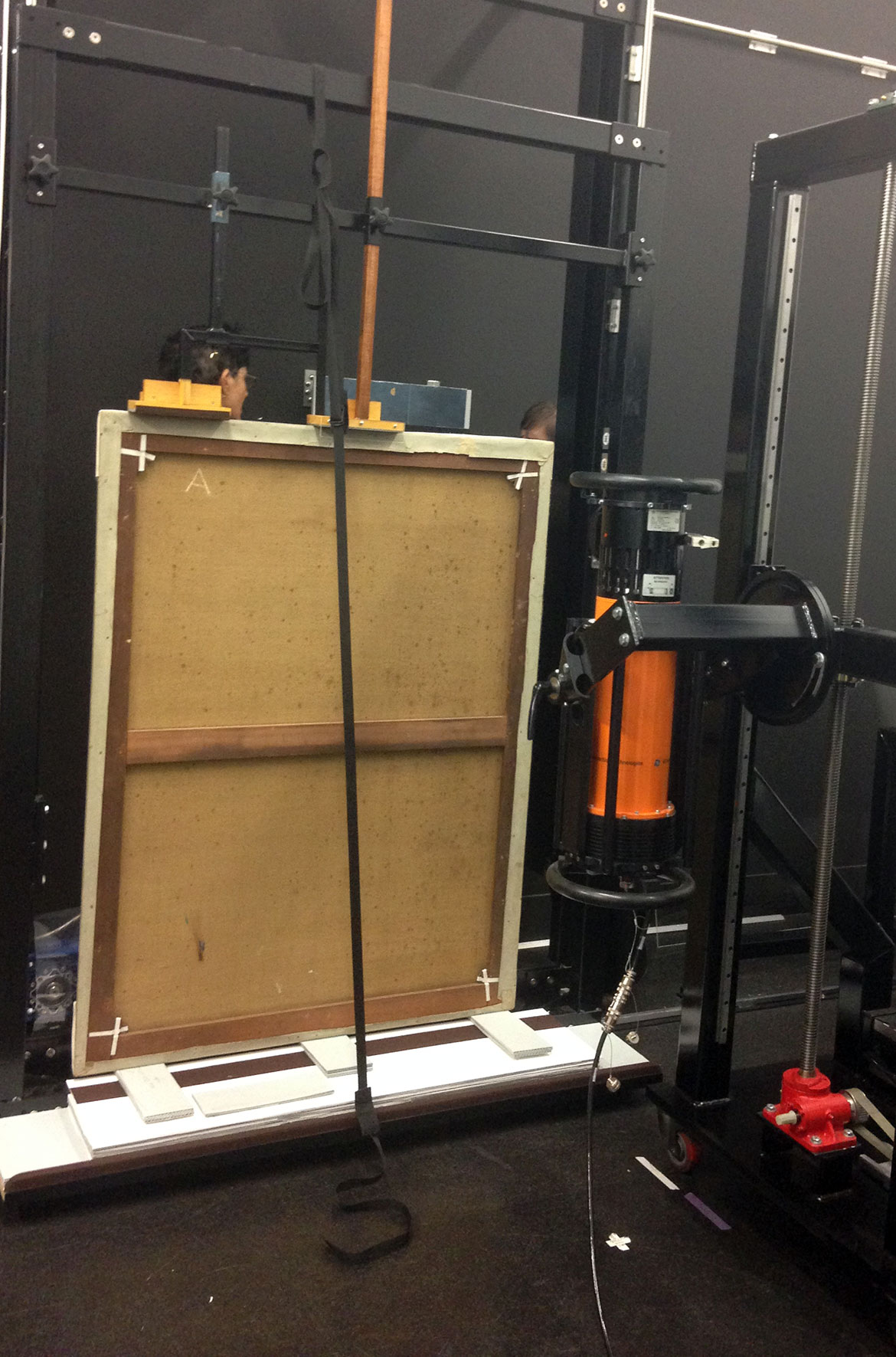
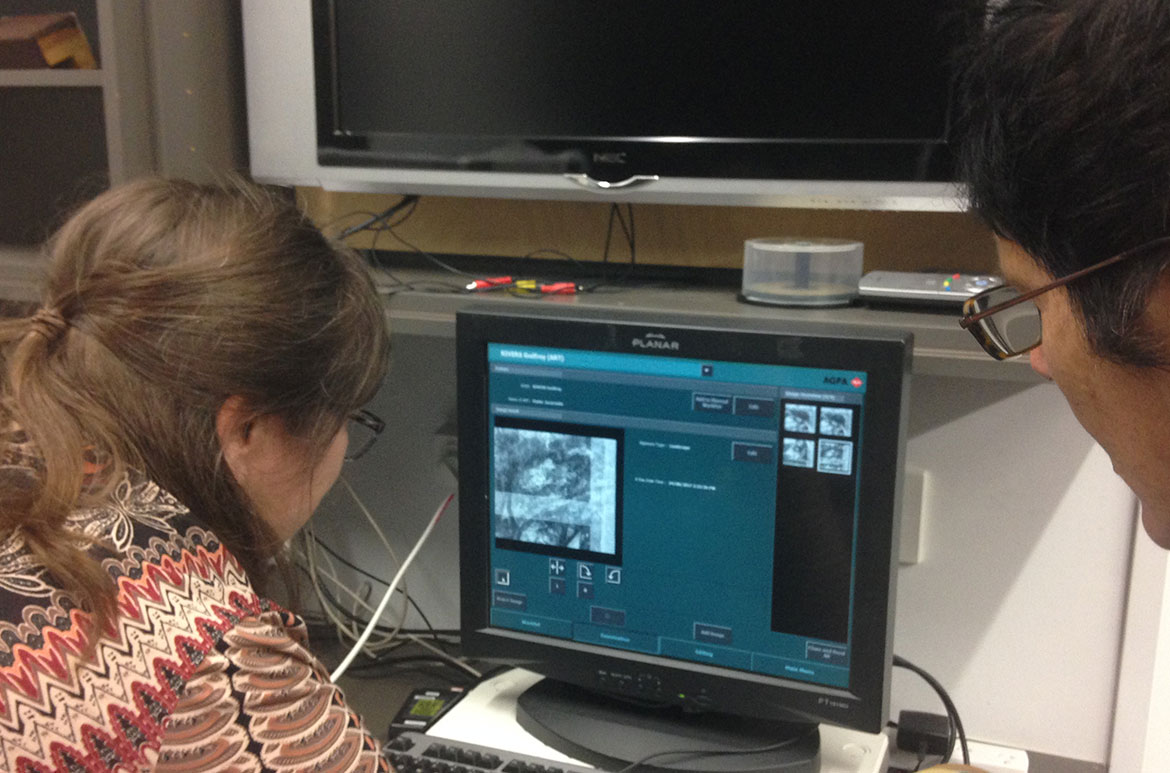
Just as in X–rays of humans where bones block more X–rays than flesh because of the calcium they contain, parts of the painting with pigments containing the highest atomic mass elements (in this case lead white) appear lighter in the X–ray. Carbon–based blacks and earth colours not mixed with white, such as the tree trunk, appear darkest. This is because the higher atomic mass elements such as lead block the X–rays more effectively leaving these areas unexposed (white) on the X–ray plate.
RELATED: Read more about UNDER THE JACARANDA
SIGN UP NOW: Be the first to know. Subscribe to QAGOMA Blog for the latest announcements, acquisitions, and behind-the-scenes features.
So what can you see in this X–ray?
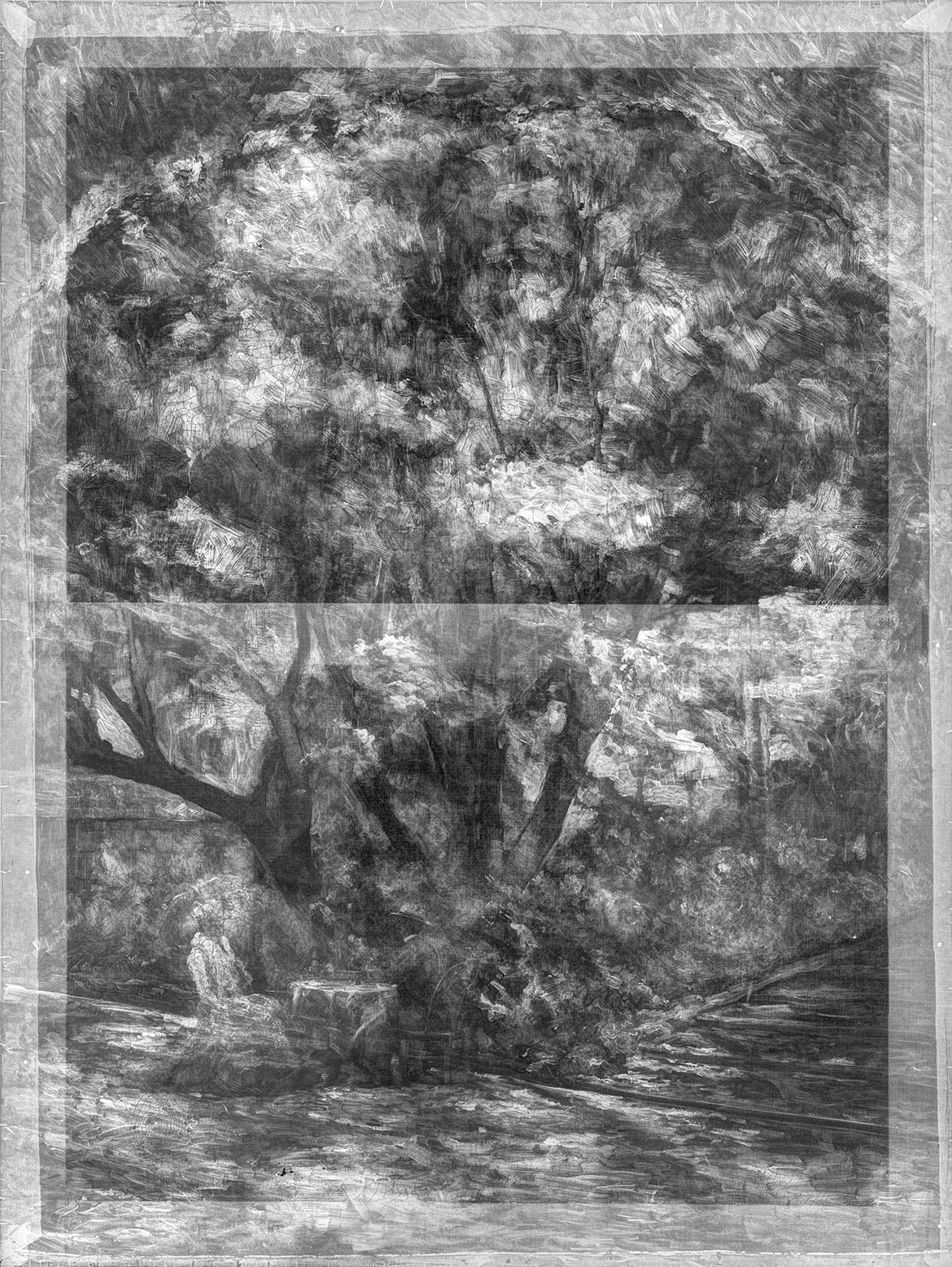

What first comes to mind is the ghostly–ness of the figures at afternoon tea. The background pathway goes right through Selina and Godfrey, their attendant and the table setting, indicating that they were painted after the landscape – perhaps even as an afterthought?
The wooden stretcher supporting the canvas is also visible in the X-ray as a lighter margin around the perimeter and across the centre. Iron tacks holding the canvas to the wooden stretcher are seen and appear light as the metal blocks X–rays.
Right at the base of the tree, at least one other figure can be seen in the X–ray overpainted by thick foliage — possibly a figure or figures at a slightly larger scale than Selina and Godfrey. Is this an earlier version of the attendant serving them tea? View the X–ray detail to see what you think is going on.
X–ray detail
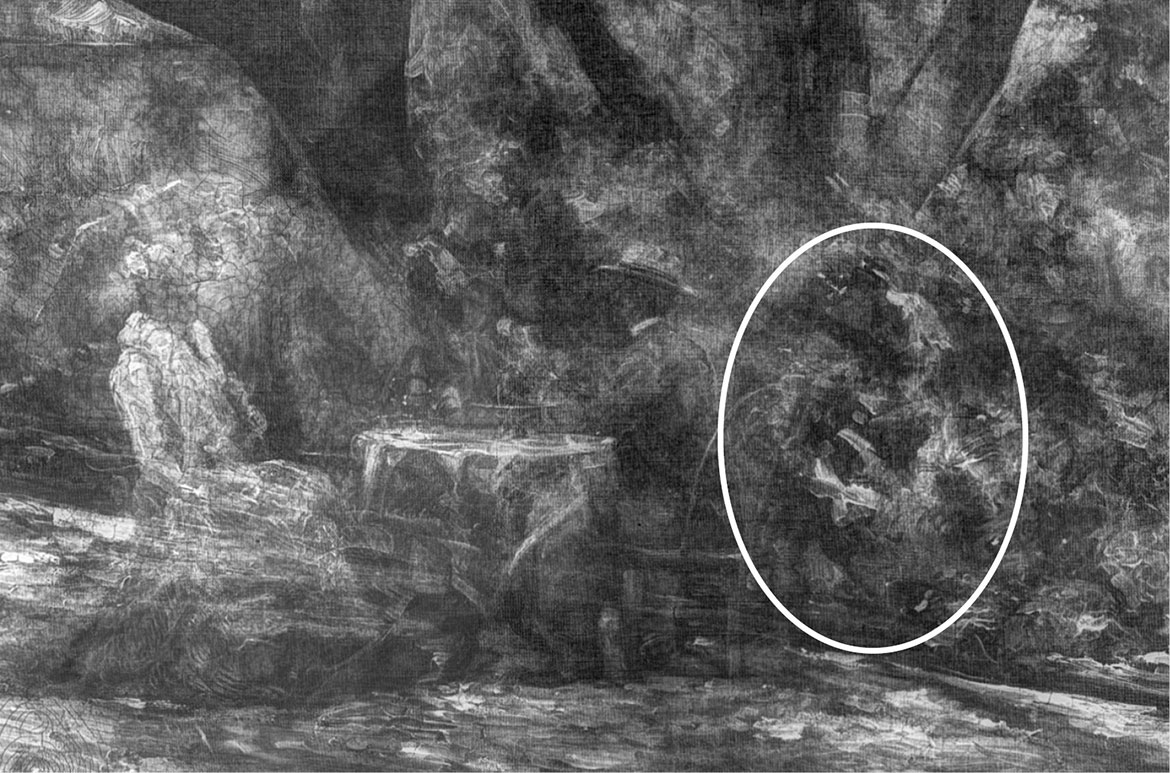
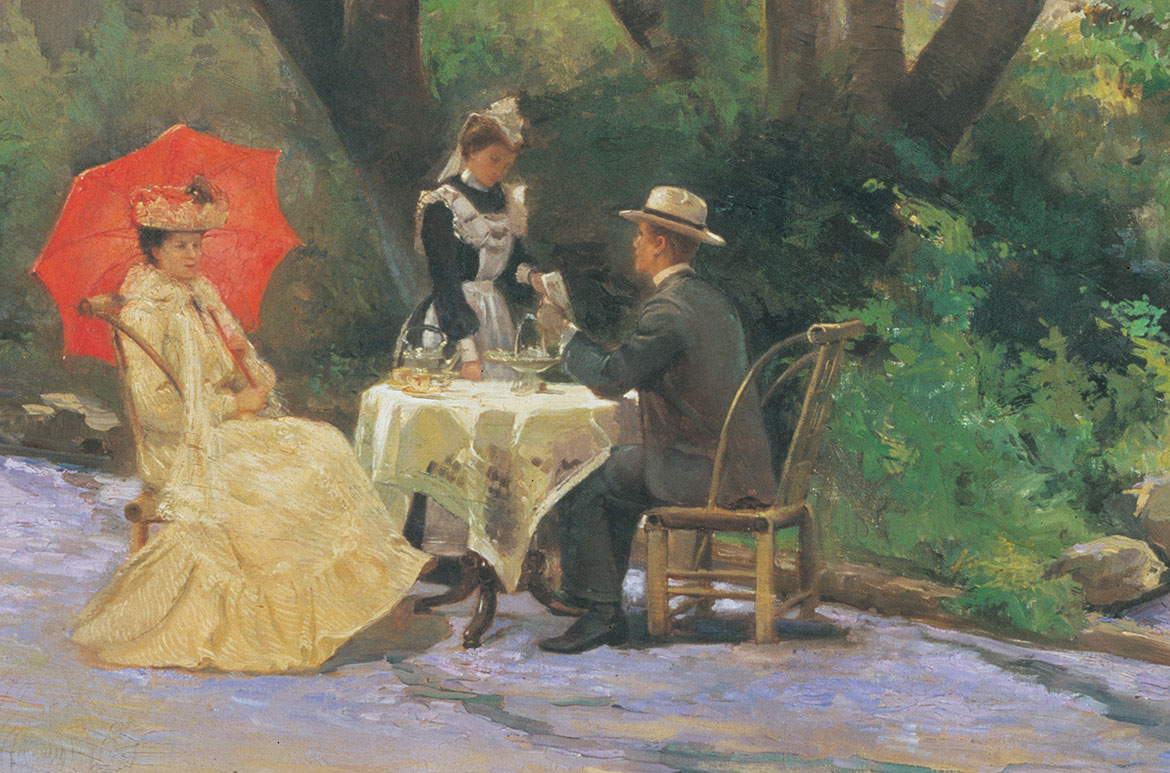
Lighter passages in the X–ray image also coincide with the palest jacaranda blossoms, as well as the white highlights in the woman’s dress and tablecloth and the lightest areas of sky. Some of the tree branches appear to have slightly shifted. The X–ray even gives clues to some of River’s working, indicating he has applied more sky paint around the periphery of the Jacaranda canopy to strengthen its silhouette.
These possible changes in composition made by Rivers as he finalised the couple indulging in that most civilised of practices, the taking of tea — might also explain the layer structure visible in the paint cross sections.
Paint sample viewed with visible light
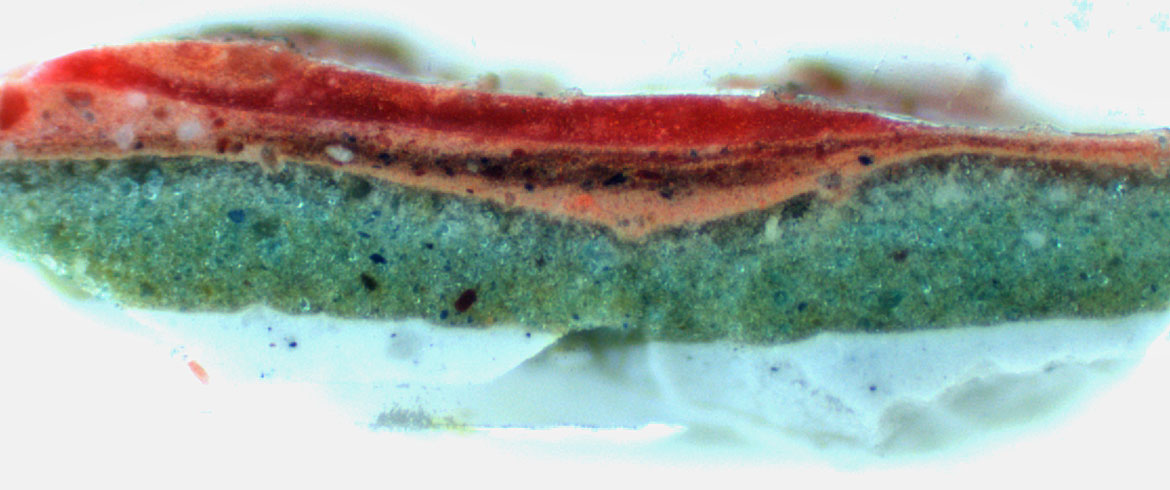
Taken from the woman’s red parasol, this sample shows various layers of red and brown paint applied over a contrasting green (with white priming layers seen below). This paint layering confirms that the parasol was added after the green shrubbery had already been painted. The sharp boundary between red and green layers in the cross section is a further clue that green paint was thoroughly dry prior to the parasol being painted on top.
Paint sample viewed with ultraviolet fluorescence
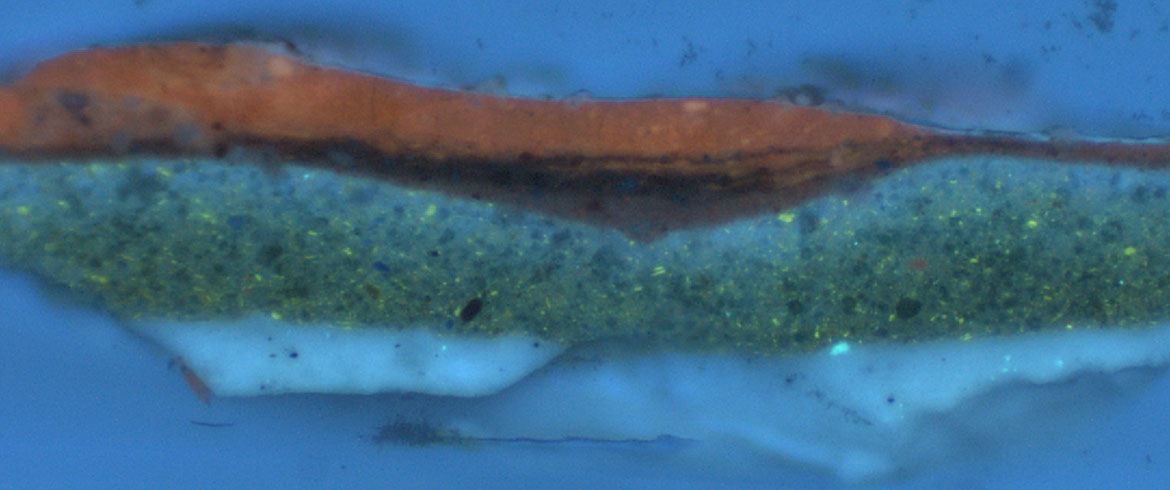
Just as Rivers applied several layers of variously hued purple paint to achieve his Jacaranda bloom, this cross section reveals a number of applications of red paint to finalise the parasol. The distinctive ultraviolet fluorescence indicates madder lake is predominant in the reds, applied virtually unmixed in the substantive top layer following earlier applications that incorporated varying amounts of white or other pigmentation.
A distinctive feature of the green paint in this sample is the bright fluorescent yellow particles. This is a property characteristic of Indian Yellow which, if confirmed to be present, would be an unusual pigment for Rivers to have used given its fall from favour during the nineteenth century.
Anne Carter is Conservator, Paintings, QAGOMA
Gillian Osmond is Conservator, Paintings, QAGOMA
Paint samples were originally prepared in 2001 by former Senior Conservator John Hook, QAGOMA
Know Brisbane through the Collection / Read more about Australian Art / Subscribe to QAGOMA YouTube to go behind-the-scenes
Featured image detail: R. Godfrey Rivers Under the jacaranda 1903
#RGodfreyRivers #QAGOMA
